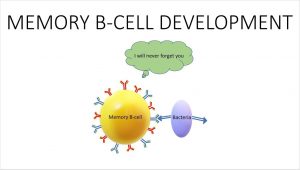Covid-Proof Immune Systems
Written by: Lily Song
As the growing number of people who have fought off Covid-19 climbs higher, a critical question begins to rise: How long will their immunity to the virus last? While much has been done to understand the virus, there is still a lot to be learned about immunity after recovery from COVID-19, including how long it lasts. Knowing how long the virus lasts after recovery, is an important factor in creating vaccine protocols. A new Rockefeller study offers an encouraging answer, suggesting that those who recover from COVID-19 are protected against the virus for at least six months, and likely much longer.
Antibodies
The recent findings published in the journal Nature provide the strongest evidence yet that the immune system “remembers” the virus and continues to improve the quality of antibodies — proteins created by the body in response to infection — even after the infection has waned. Antibodies produced months after the infection showed increased ability to block COVID-19, as well as its mutated versions such as the South African variant. The researchers found that these improved antibodies are produced by immune cells that have kept evolving, apparently due to a continued exposure to the remnants of the virus hidden in the gut tissue.
Based on these findings, researchers Michel C. Nussenzweig, Zanvil A. Cohn, and Ralph M. Steinman believe that when patients who have recovered from COVID-19 next encounter the virus, the response would be more efficient and effective, thus preventing re-infection. This is really exciting news, as the type of immune response observed here could enable the body to mount a rapid and effective response to the virus upon re-exposure, thus potentially providing protection for a long period of time. Nussenzweig, Cohn, and Steinman’s team has been tracking and characterizing antibody response in Covid-19 patients since the beginning of the pandemic in New York.
Lasting Memory
Although antibodies linger in the blood plasma for several weeks or months, their levels significantly drop with time. Thankfully, the immune system has a more efficient way of dealing with pathogens: instead of constantly producing antibodies, it creates memory B cells that can recognize the pathogen from before and quickly unleash a new round of antibodies when they encounter it again. How well this memory works depends on the pathogen.
To understand the B cells’ memory with SARS-CoV-2, Nussenzweig and his colleagues studied the antibody responses of 87 individuals one month after infection, and then again six months later. As expected, they found that after the six-month point, antibody counts significantly decreased. Lab experiments showed that the ability of the participants’ plasma samples to neutralize the virus was reduced by five times.
In contrast, the patients’ memory B cells, specifically those that produce antibodies against SARS-CoV-2, did not decline in number, and even slightly increased in some cases. Furthermore, the numbers of memory B cells that attacked the receptor-binding domain of the virus, which are the cells you need if you encounter the virus again, stayed the same.
Figure 1.
Depiction of memory B cells

Viral Stowaways
When researchers took a closer look at the memory B cells, they found something surprising: the cells had gone through numerous rounds of mutation even after the infection resolved, and as a result, the antibodies they produced were much more effective than the original ones. Lab experiments showed that this new set of antibodies was better able to latch on tightly to the virus and could even recognize mutated versions of it. This type of constant evolution often happens in chronic infections, like HIV or herpes, where the virus lingers for a long time. Therefore, researchers weren’t expecting to see it with COVID-19, which is thought to leave the body after the infection is resolved.
COVID-19 reproduces in cells in the lungs, upper throat, and small intestine. Residual viral particles hiding within these tissues could be driving the evolution of memory cells. To test this hypothesis, the researchers contacted Saurabh Mehandru, a former Rockefeller scientist and currently a physician at Mount Sinai Hospital, who has been examining biopsies of intestinal tissue from people who had recovered from COVID-19. In seven of the fourteen individuals studied, tests showed the presence of COVID-19’s genetic material in the cells that line the intestines. The researchers weren’t sure whether these viral left-overs were still infectious or were simply the remains of dead viruses.
Conclusion
Overall, a lot more can be done to understand immunity to COVID-19 after recovery. Though antibodies are effective in fighting off the virus, they have several limitations. However, memory B cells, which can produce antibodies against the virus for a second time, seem to be a promising first step to this journey. When researchers took a closer look at the cells, they found that they had undergone many mutations to fight off even mutations of COVID-19. In the meantime, the team plans to study more people to better understand what role the viral stowaways may play in both the progression of the disease and in immunity.
References and Sources
Schimelpfening, N. (2021, January 11). How Long Does Immunity Last After COVID-19? What We Know. Retrieved January 24, 2021, from https://www.healthline.com/health-news/how-long-does-immunity-last-after-covid-19-what-we-know
Immune System Mounts a Lasting Defense After Recovery from COVID-19, researchers find. (2021, January 21). Retrieved January 24, 2021, from https://www.sciencedaily.com/releases/2021/01/210121131909.htm
William C. Shiel Jr., M. (2018, December 27). Definition of Memory B cells. Retrieved January 24, 2021, from https://www.medicinenet.com/memory_b_cells/definition.htm